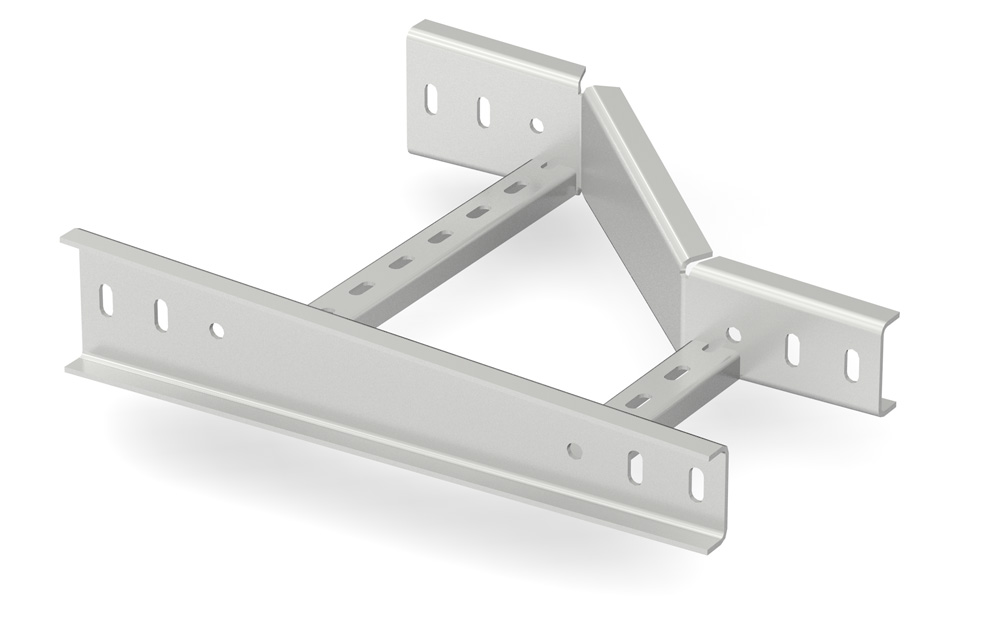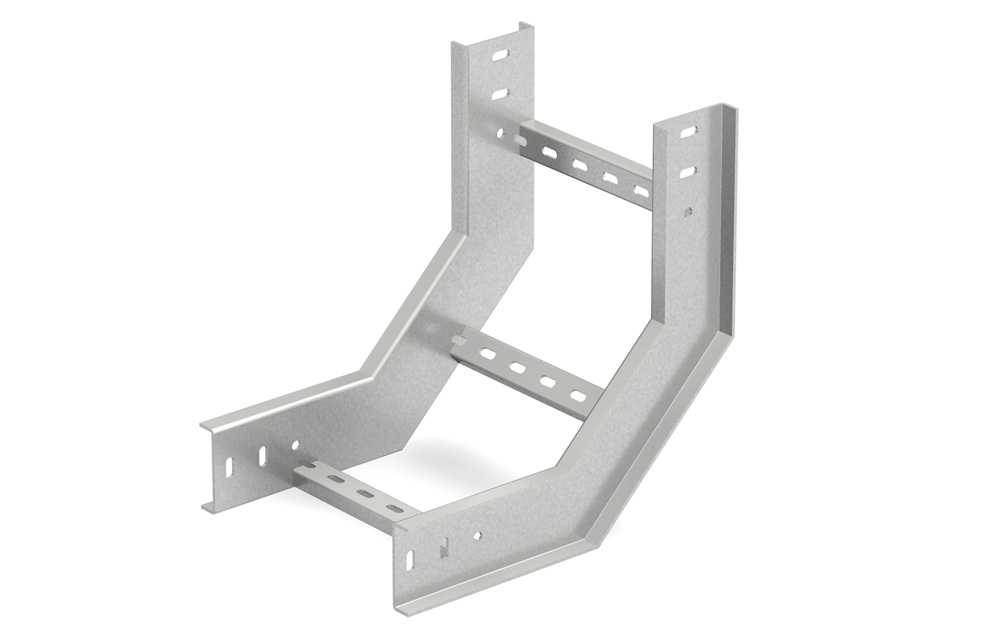Wire cable tray is a versatile and efficient cable management system that has become an essential component of modern electrical installations. It is designed to provide a safe, organized, and accessible means of routing and supporting electrical cables and wires, while also promoting proper ventilation and heat dissipation.
The basic components of wire cable tray include the tray itself, which can be straight or curved, and various accessories such as supports, fittings, and covers. Wire cable tray is available in different materials, including steel, aluminum, stainless steel, and PVC, and can be customized to meet specific requirements for load capacity, size, shape, and finish.
In this article, we will explore the key features and benefits of wire cable tray, as well as its applications, installation considerations, maintenance requirements, and safety guidelines.

Key Features of Wire Cable Tray:
1. Open Design: One of the most distinctive features of wire cable tray is its open design, which allows for easy access and visibility of cables. This design promotes proper ventilation and heat dissipation, reducing the risk of overheating and fires.
2. Durability: Wire cable tray is made from high-quality materials that are designed to withstand harsh environmental conditions and heavy loads. It is resistant to corrosion, rust, and other forms of damage, making it a reliable and long-lasting solution for cable management.
3. Flexibility: Wire cable tray is highly flexible and adaptable to different environments and applications. It can be installed in various configurations, including overhead, underfloor, and wall-mounted, and can accommodate a wide range of cable sizes and types. This makes it ideal for use in diverse industries such as manufacturing, construction, telecommunications, and data centers.
4. Cost-Effective: Wire cable tray is generally more cost-effective than other cable management systems such as conduit or raceway. It is easier and faster to install, requires fewer components, and can be customized to fit specific needs and budgets. Additionally, wire cable tray is reusable and can be easily modified or expanded as needed, which can further reduce costs over time.
5. Safety: Wire cable tray provides enhanced safety by reducing the risk of electrical hazards such as short circuits, fires, or electrocution. The open design of the tray allows for proper ventilation and heat dissipation, which can prevent overheating and reduce the risk of fires. Additionally, wire cable tray can be installed with appropriate covers or guards to protect against accidental contact with energized cables.
Applications of Wire Cable Tray:
Wire cable tray has a wide range of applications across various industries. Some of the most common uses of wire cable tray include:
1. Industrial Facilities: Wire cable tray is commonly used in industrial facilities to manage and support large amounts of electrical cables and wires. It is particularly useful in areas where there is a high risk of exposure to harsh environmental conditions, such as dust, moisture, or chemicals.
2. Commercial Buildings: Wire cable tray is also widely used in commercial buildings to route and organize cables for lighting, HVAC, security, and communication systems. It can be installed in ceilings, walls, or floors, depending on the specific needs of the building.
3. Telecommunications and Data Centers: Wire cable tray is essential in telecommunications and data centers, where large amounts of cables and wires must be managed efficiently and safely. It can be used to route and organize cables for servers, routers, switches, and other equipment.
4. Residential Homes: Wire cable tray can also be used in residential homes to manage and organize cables for home automation, entertainment systems, and other electrical devices.
Installation Considerations:
When installing wire cable tray, there are several factors to consider to ensure optimal performance and safety. These include:
1. Load Capacity: The load capacity of wire cable tray depends on the material, size, and configuration of the tray. It is important to choose a tray that can support the weight of the cables and any additional accessories or components.
2. Accessibility: Wire cable tray should be installed in a way that allows for easy access and maintenance of cables. This may require the use of ladder racks, walkways, or other access points.
3. Clearance Requirements: Wire cable tray should be installed with sufficient clearance from combustible materials, obstructions, and other hazards. This may require compliance with local building codes and regulations.
4. Fire Protection: Wire cable tray can be installed with fire-resistant coatings or insulation to reduce the risk of fires and protect against the spread of flames.
5. Grounding and Bonding: Wire cable tray should be properly grounded and bonded to ensure electrical safety and prevent potential hazards.
Maintenance Requirements:
Proper maintenance of wire cable tray is crucial to ensure its longevity and continued effectiveness in managing cables. Some key maintenance tasks include:
1. Regular Inspections: Conduct regular inspections of wire cable tray to identify any signs of damage, wear and tear, or corrosion. This includes checking for loose or damaged supports, fittings, or covers.
2. Cleaning: Clean wire cable tray regularly to remove any accumulated dust, debris, or other contaminants that can interfere with proper ventilation and heat dissipation.
3. Lubrication: Lubricate any moving parts or hinges in wire cable tray to ensure smooth operation and prevent rust or corrosion.
4. Cable Management: Manage cables within wire cable tray to prevent overcrowding or tangling, which can cause damage or reduce efficiency.
Safety Guidelines:
To ensure safe and effective use of wire cable tray, it is important to follow these safety guidelines:
1. Proper Installation: Install wire cable tray according to manufacturer specifications and local building codes and regulations.
2. Electrical Safety: Ensure that all cables and wires within wire cable tray are properly insulated and grounded to prevent electrical hazards.
3. Personal Protective Equipment (PPE): Use appropriate PPE when working with wire cable tray, including gloves, safety glasses, and hard hats.
4. Fall Protection: Implement appropriate fall protection measures when working at heights or on elevated surfaces.
Conclusion:
Wire cable tray is a versatile and efficient cable management system that offers numerous benefits in terms of organization, safety, flexibility, adaptability, maintenance, accessibility, and aesthetics. Whether you are managing cables in an industrial facility, a commercial building, or a residential home, wire cable tray can help you achieve your goals for efficient and reliable cable management.
When choosing and installing wire cable tray, it is important to consider factors such as load capacity, accessibility, clearance requirements, fire protection, and grounding and bonding. With proper installation and maintenance, wire cable tray can provide a long-lasting and cost-effective solution for cable management in a wide range of applications.
However, it is also important to follow safety guidelines and best practices to ensure the safe and effective use of wire cable tray. By taking these precautions, you can maximize the benefits of wire cable tray while minimizing the risks associated with electrical installations.


